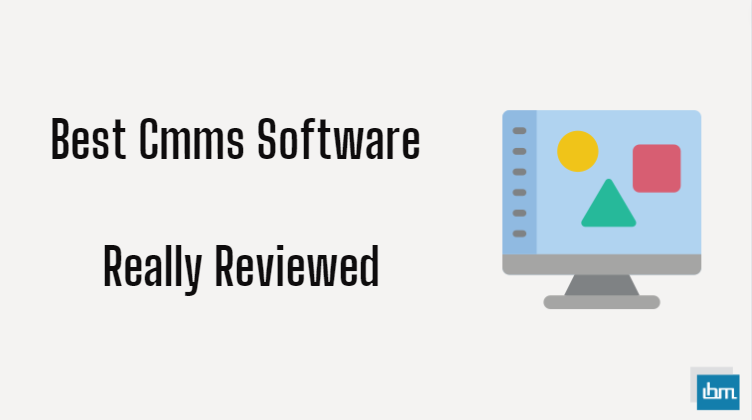Reviewed by: Jayprakash Prajapati | Last updated on October, 30, 2025
Best YouTube Channels for Sociology Learning. The field that examines society and social behavior, offers valuable perspectives on the intricate dynamics of human interactions and societal frameworks.
YouTube serves as an exceptional platform to delve into sociology, presenting a diverse range of channels that cater to various interests and learning preferences. The top 9 sociology YouTube channels that you may have never come across before.
YouTube provides a fantastic opportunity to study sociology with its easy access and wide range of content. Whether you enjoy in-depth lectures, animated tutorials, or engaging discussions, you’ll find a channel that suits your preferences.
What Are The Best YouTube Channels for Sociology Learning?
Check out these top Sociology Learning YouTube channels for all your Sociology needs!
Crash Course Sociology.

Crash Course is an educational YouTube channel that covers a wide range of academic subjects through engaging video series. The channel was started by brothers John and Hank Green in 2011 and has since grown to include multiple hosts and over 40 main series.
The secret behind Crash Course’s success is its ability to make complex topics accessible and entertaining through the use of humor, visual aids, and the hosts’ personal connections with the audience. The Green brothers’ rapport and teaching styles have helped create a sense of intimacy and trust with viewers, even in an online format.
Crash Course videos typically feature a host progressively elaborating on a topic, using various formats depending on the subject matter.
The channel has covered humanities subjects like World History, Literature, and Philosophy, as well as sciences like Biology, Chemistry, and Astronomy. More recently, Crash Course has expanded into topics like Film History, Study Skills, and Economics.
The channel launched a preview on December 2, 2011, and has since accumulated over 15 million subscribers and 1.8 billion video views as of March 2022.
Crash Course has also partnered with PBS Digital Studios, Arizona State University, and YouTube’s Learning Fund initiative to produce more content and reach a wider audience.
Khan Academy Sociology.

The Khan Academy YouTube channel does not primarily feature story-based videos. Instead, the focus of the channel is on educational content across a wide range of academic subjects.
The secret behind the success of the Khan Academy channel is its ability to make complex topics accessible and engaging through the use of simple, conversational video lessons. The videos typically feature a narrator explaining concepts using a digital blackboard or other visual aids, rather than traditional lecture-style presentations.
The Khan Academy channel was launched in 2006 by Sal Khan, with the goal of providing a free, high-quality education to anyone, anywhere. The channel has since grown to include thousands of video lessons covering subjects like math, science, history, economics, and more.
In addition to the video lessons, the Khan Academy platform also offers interactive exercises, progress tracking, and other features to support student learning. The channel has partnered with organizations like the College Board to provide official test preparation content as well.
The key to Khan Academy’s success has been its focus on mastery-based learning, where students are encouraged to work at their own pace and receive instant feedback to help them truly understand the material. This approach, combined with the channel’s high-quality, accessible content, has made Khan Academy a valuable educational resource for millions of learners around the world.
The Sociology Guy.

The Sociology Guy YouTube channel primarily features educational videos on sociological concepts and theories. The videos aim to make complex sociological topics more accessible and engaging for students.
The secret behind the success of The Sociology Guy channel is its focus on creating visually appealing and easy-to-understand explanations of sociological ideas. The videos often use simple animations, diagrams, and examples to illustrate key points, making them more memorable for viewers.
The Sociology Guy channel was launched in 2020, as evidenced by a video titled “The Sociology Guy 2020challenge”. Since then, the channel has grown to include a variety of videos covering topics such as social stratification, gender, race, and more.
The channel’s creator, who goes by “The Sociology Guy”, has a clear passion for the subject matter and a talent for breaking down complex concepts into manageable pieces. This enthusiasm and expertise shine through in the videos, making them engaging and informative for students of sociology at various levels.
While the channel does not feature story-based videos per se, the educational content it provides is invaluable for anyone looking to learn more about sociology in an accessible and enjoyable way. The Sociology Guy’s commitment to making sociology more understandable and relatable is evident in the quality and style of the videos produced.
OpenLearn from The Open University.

The OpenLearn from The Open University YouTube channel does not primarily feature story-based videos. Instead, the focus of the channel is on providing free educational content and resources from The Open University.
The secret behind the success of the OpenLearn channel is its ability to make high-quality educational content accessible to a wide audience for free. The Open University is a pioneer in distance learning, and the OpenLearn channel allows it to share its expertise and resources with learners around the world.
The OpenLearn YouTube channel was launched in 2008 to complement the OpenLearn website, which has been providing free online courses and resources since 2006. The channel features a variety of content, including.
While the channel does not feature story-based videos, it does include some creative writing resources, such as a course on “Start writing fiction: characters and stories”. This course provides a practical, hands-on approach to getting started with fiction writing, focusing on creating characters and developing ideas.
Socratica.

The Socratica YouTube channel primarily features educational videos on a variety of academic subjects, including science, math, and computer programming. While the channel does not focus on story-based videos, it does include some creative content that incorporates storytelling elements.
The secret behind the success of the Socratica channel is its ability to make complex topics engaging and accessible through the use of clear explanations, visual aids, and a conversational tone. The channel’s hosts, who are experts in their respective fields, have a knack for breaking down difficult concepts in a way that is easy for viewers to understand.
Socratica was launched in 2013, as evidenced by a Kickstarter campaign for “Advanced Python Videos by Socratica” that was started in that year. Since then, the channel has grown to include over 500 videos covering a wide range of subjects, from introductory science and math lessons to advanced programming tutorials.
While Socratica’s main focus is on educational content, the channel has also produced some videos that incorporate storytelling elements. For example, the Socratica Kids channel features animated videos that use fictional characters and narratives to teach scientific and mathematical concepts to younger viewers.
TED-Ed.

The TED-Ed YouTube channel primarily features educational videos that use storytelling and animation to explore a wide range of academic subjects and ideas.
The secret behind the success of the TED-Ed channel is its ability to take complex topics and present them in an engaging, visually-compelling way. The videos often use narrative elements, relatable characters, and creative visuals to make learning fun and memorable for viewers.
The TED-Ed channel was launched in 2011 as an extension of the TED Talks brand, with the goal of creating “lessons worth sharing” that could inspire curiosity and learning. Since then, the channel has grown to include over 2,000 videos covering subjects like science, history, literature, and more.
In Addition to the main TED-Ed channel, the platform also includes specialized channels like TED-Ed Student Talks, which features student-created videos on personal stories and ideas, and TED-Ed Educator Talks, which provides resources and insights for teachers.
TEDx Talks.

The TEDx Talks YouTube channel does not appear to be the focus of this query. The search results mention the TED and TED-Ed channels, but do not provide any information about TEDx Talks specifically.
However, based on the information about TED and TED-Ed, we can infer that the TEDx Talks channel likely features short, thought-provoking talks and presentations from speakers at independently organized TEDx events around the world.
These talks likely cover a wide range of topics and use storytelling and creative visuals to engage viewers and share ideas worth spreading.
The secret behind the success of the TED and TED-Ed channels seems to be their ability to make complex topics accessible and engaging through the use of storytelling, animation, and visual creativity. The channels aim to inspire curiosity and learning by presenting ideas in a compelling way.
The TED-Ed channel was launched in 2011 as an extension of the TED Talks brand, but the search results do not provide a specific launch date for the TEDx Talks channel.
TEDx events have been taking place since 2009, so it’s likely that the TEDx Talks YouTube channel was created sometime after that to share content from these local events.
The School of Life.

The School of Life YouTube channel does not primarily feature story-based videos. Instead, the focus of the channel is on creating educational and thought-provoking content that aims to help viewers develop self-understanding, emotional maturity, and a deeper appreciation for the human experience.
The secret behind the success of The School of Life channel is its ability to take complex philosophical and psychological concepts and present them in an engaging, accessible, and visually compelling way. The videos often use a combination of narration, animation, and real-world examples to explore topics related to relationships, careers, emotions, and the human condition.
While the channel does not tell traditional stories, it does incorporate storytelling elements to illustrate its ideas. For example, some videos use hypothetical scenarios or personal anecdotes to help viewers relate to the concepts being discussed.
The School of Life YouTube channel was launched in 2014, as evidenced by the oldest video on the channel being from that year. Since then, the channel has grown to include over 900 videos and has amassed over 8.9 million subscribers.
The channel’s success can be attributed to its commitment to providing high-quality, insightful content that resonates with viewers who are seeking a deeper understanding of themselves and the world around them. By combining educational and philosophical ideas with creative visual storytelling, The School of Life has established itself as a valuable resource for personal growth and self-discovery.
Wisecrack.

The Wisecrack YouTube channel primarily features videos that analyze and discuss storytelling techniques, themes, and philosophies in popular media like TV shows, movies, and video games.
The secret behind the success of the Wisecrack channel is its ability to take complex academic and philosophical concepts and present them in an engaging, accessible, and entertaining way. The channel’s hosts and creators have a deep understanding of narrative structure, character development, and the human condition, which they use to offer unique and insightful perspectives on the stories we love.
Wisecrack was launched in 2013, as evidenced by the oldest video on the channel dating back to that year. Since then, the channel has grown to include over 1,000 videos covering a wide range of topics, from the philosophy of Rick and Morty to the storytelling techniques used in Adventure Time.
These videos delve into the narrative structures, character arcs, and thematic elements that make these shows and films so compelling and meaningful. By combining academic analysis with a conversational, humorous tone, Wisecrack is able to make these topics accessible and engaging for a wide audience.
The channel’s success can be attributed to its commitment to exploring the art of storytelling and its ability to connect with viewers who are passionate about the media they consume. Wisecrack’s unique perspective and entertaining delivery have made it a go-to destination for anyone interested in the deeper meanings and techniques behind their favorite stories.
YouTube Channels for Sociology – FAQ’s.
Some of the top YouTube channels for sociology include Crash Course Sociology, The Sociology Guy, and The School of Life. These channels offer engaging content that covers various sociological concepts and theories.
Many YouTube channels provide free access to sociology content, including lectures, discussions, and animated tutorials. Channels like Sleepy Classes IAS and Sociology Simplified are great for free resources.
Yes, channels like Sleepy Classes IAS, Sociology Optional by Ankit Sir, and Sociology Simplified are particularly beneficial for UPSC aspirants, offering structured lessons and clear explanations.
The Sociology Guy focuses on making complex sociological topics accessible through visually appealing videos that include animations and diagrams to explain key concepts effectively.
Learning sociology via YouTube is beneficial as it provides diverse teaching styles, easy access to high-quality content, and the ability to learn at your own pace.
Many creators engage with their audience through comments or social media, allowing for some level of interaction. However, the extent of personalized help may vary by channel.
Crash Course Sociology covers a wide range of sociological topics in an engaging format, using humor and visual aids to make complex subjects more relatable and easier to understand.
For studying sociology optional, channels like Sociology Optional by Ankit Sir and Sleepy Classes IAS are highly recommended due to their comprehensive approach to the syllabus.
Yes, channels like Strange Fruit Sociology provide discussions on contemporary media and sociological issues, offering a different perspective on current events through a sociological lens.
To improve your understanding of sociology effectively, aim to watch videos consistently—ideally a few times a week—to reinforce learning and retention.
Many sociology channels provide supplementary resources such as worksheets, quizzes, and links to related content that enhance the learning experience beyond just video lectures.
Conclusion.
YouTube has emerged as a vibrant platform for exploring sociology, offering a wealth of channels that cater to diverse learning styles. Channels like Crash Course Sociology and The Sociology Guy provide engaging content that simplifies complex sociological concepts through humor and visuals.
These platforms not only make learning enjoyable but also foster a sense of community among viewers, encouraging discussions around societal issues and behaviors.
In addition to educational content, channels such as The School of Life delve into philosophical and psychological aspects of human experience, enriching the understanding of sociology.
By blending storytelling with educational insights, these channels create a relatable context for viewers, making abstract theories more tangible and applicable to everyday life. This approach enhances critical thinking and emotional intelligence, key components in the study of sociology.
Overall, YouTube serves as an invaluable resource for both novice learners and seasoned scholars in sociology. The accessibility of these channels allows individuals to engage with the subject matter at their own pace, reinforcing academic knowledge while fostering a deeper appreciation for the complexities of human society.





A fairly new you tube channel dedicated to sociology concepts and theories.
Thank you for your kind words! 😊 Yes, this channel is dedicated to sharing clear and easy explanations of sociology concepts and theories. Stay tuned for more insightful blog ahead! 🎓📚